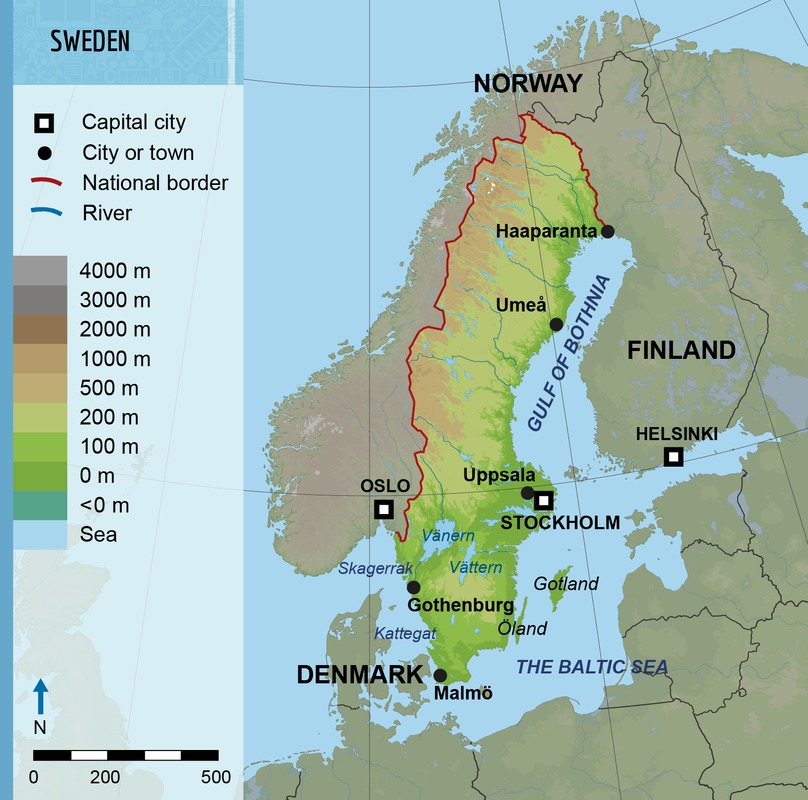21. Sweden
Contents
21.1 Swedish geography
 Sweden in Finland's best-known neighboring country.
Sweden in Finland's best-known neighboring country. The nation's surface area is 450 000 km², which means that it is larger than Finland. Approximately 9 % of the Swedish surface area is covered by water.
Like Finland, Sweden is known for its many lakes. There are almost 100 000 lakes with a surface area larger than one hectare in Sweden. This number is almost twice as large as the number of lakes with a size of one hectare or larger in Finland. The best-known Swedish lakes are the large Vänern, Vättern and Mälaren.
The southern parts of the nation are located inside the temperate broadleaf and mixed forest zone. Because of this, the changes of the seasons are easily visible between the lush and green summer and the barren winter. Because the soil of the broadleaf forest zone is for the most part rich in nutrients, large regions of Southern Sweden have been converted for agricultural use.
The Scandinavian mountains or the Scandes are mostly located in Norway but also overlap the border of Sweden in many places. The nation's highest point, Kebnekaise, is 2 111 meters tall. This means that it is approximately 800 meters higher than the Finnish Halti.
21.2 Swedish society
 Sweden became independent from the Kalmar Union in the year 1523, led by Gustav Vasa. For a hundreds of years, Finland was part of the kingdom of Sweden. Sweden became a part of the European Union at the same time as Finland, in the year 1995.
Sweden became independent from the Kalmar Union in the year 1523, led by Gustav Vasa. For a hundreds of years, Finland was part of the kingdom of Sweden. Sweden became a part of the European Union at the same time as Finland, in the year 1995. Sweden is a constitutional monarchy, meaning that its royal family has official power that is bound to the Swedish constitution. Today, however, actual legislative authority is exercised by the nation's parliament.
Sweden is home to approximately 9,3 million people, which is a relatively small number when compared to the nation's surface area. Most Swedes live in the densely populated urban areas of Southern Sweden, as well as on the shores of large lakes and the Baltic Sea. Swedish Lapland is relatively uninhabited when compared to Finnish Lapland. Despite this, Sweden is the most populous Nordic nation. Swedish Lapland is also home to approximately 17 000 Sami people.
Sweden's largest economic sector is the service sector, which provides approximately 72 % of the nation's total gross domestic product. Particularly important industries include machine production, ore mining and steel refining. The pharmaceutical and chemical industries also provide important exports.